| |
March 2012
|
|

1. In the news
The Engineering Council has presented Professor Youssef Marzouk with the Junior Bose Award for Excellence in Teaching. The award is presented each year "to the outstanding contributor to education from among the School of Engineering faculty members who are being proposed for promotion to associate professor without tenure."
Best wishes to Professor Nick Roy and his wife Kristine on the birth of twins Nira Sheryl Margaret and George Matthew Anil who arrived on February 18. Nick reports that "older brother Wiliam, 2, is looking forward to having a left and right winger for his daycare intramural hockey team."
Professor Ed Crawley has been elected a member of the Chinese Academy of Engineering. In a note to Ed, MIT President Susan Hockfield wrote, "In your extraordinary career you have been a consummate engineer, an inspirational educator, and an innovative leader, and the Chinese Academy of Engineering has chosen well in recognizing you."
The International Council on Systems Engineering named Professor Oli de Weck an INCOSE Fellow. INCOSE President John Thomas wrote Oli, "You join a distinguished group of, now, 64 individuals whose contributions to the art and practice of systems engineering are recognized and respected worldwide."
Media continue to seek out Professor Missy Cummings for her expertise in UAVs. A couple of Missy's recent appearances include Science Friday and LawFare.
Dr. Chuck Oman and Professor Larry Young note the passing of Hank Jex, who was in Course 16 around class of mid-1950s, and was a devoted student of Professor Eugene Larabee. Larry says that Jex "was one of the people who turned the field of manual control into a usable tool. An inquisitive scholar, the originator of the 'critical task' for manual control, which is in use to this day for measuring mental workload."
Grad student Tamas Kolos-Lakatos has won an Aviation Week and Space Technology “Readers Choice” photography award for his photo of a KLM 737-900 in Budapest. See image 14 on the Aviation Week photo contest web page. |
|

2. Welcome
Welcome to postdocs Girish Chowdhary, Tiangang Cui,
Francisco De Lemos, Martin Hautefeuille, Aurelie Jean, Hakan Olcay, Hulya Seferoglu, and Erin Solovey.
And, welcome to research associate Jon Gibbs (who many of us knew as an AA student), and visiting scientist Lionel Mathelin.
Melanie Burliss has joined AeroAstro as administrative assistant to professors Barrett, Belobaba, Lagace, and Radovitzky. |
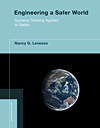
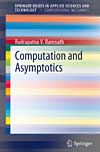
|

3. New books by Leveson, Ramnath
"Engineering in a Safer World: Systems Thinking Applied to Safety" is the title of Professor Nancy Leveson's new book. It's published by The MIT Press which says, In this ground-breaking book, Nancy Leveson proposes a new approach to safety more suited to today’s complex, sociotechnical, software-intensive world, based on modern systems thinking and systems theory." For more on Nancy's book, including purchasing info, visit The MIT Press website.
Senior Lecturer Dr. Rudrapatna V. Ramnath's new book "Computation and Asymptotics" by Rudrapatna V. Ramnath has rolled off the presses at Springer in Germany. This book addresses the task of computation from the standpoint of asymptotic analysis and multiple scales that may be inherent in the system dynamics being studied.
|

R.C. du Pont
|

4. du Pont Room revived
There are few in the department unfamiliar with room 33-206 as a place for meetings, presentations, and social gatherings. But not many are aware that this room is officially The Richard C. du Pont Room.
Richard Chichester du Pont (1911-1943), a scion of the prominent du Pont family, began flying gliders as a teen. Eventually, he became partner in a sailplane company, and then cofounded what would become Allegheny Airways and then US Air. In the 1930s, he set numerous gliding records and was a pioneer in airmail development. During WW2, du Pont was named special assistant to Army Air Force Commanding General Henry "Hap" Arnold and the Army Air Force glider program.
On September 11, 1943, du Pont bailed out of the stricken XCG-16 experimental glider. His parachute failed and du Pont was killed. He was posthumously presented with the Distinguished Service Medal by President Roosevelt.
While du Pont was not involved with MIT, his family was, and still is. Relative Irénée du Pont Jr. '43 is a lifetime emeritus MIT corporation member, and a number of other family members are alums — most recently Irénée's granddaughter (SB MSE '07, MEng in BE '08)
In 1946, Richard's father Felix established the Richard C. du Pont Memorial Fund which we use today for AeroAstro fellowships. In addition, the fund was designated "to equip and decorate a social room named for Richard du Pont," and so, 33-206 was given this designation. At completion of the 2000-2001 Building 33 renovation, the du Pont designation was inadvertently not replaced. In coming days, The Richard C. du Pont name will be repainted on the door and an information panel hung on the wall. And, the spot designated nearly 70 years ago, will once again be known by the name of this prominent aviator.
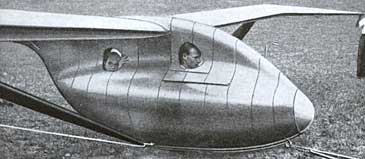
Richard du Pont at the controls of a glider he designed, prepares to take his father, Felix, for a flight some time in the 1930s. Following Richard's 1943 death, Felix established an MIT fund in his son's name.
|
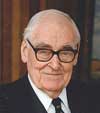
Sir William Hawthorne
|

5. Hawthorne service set
AeroAstro will host a memorial service for the late Sir William Hawthorne at the MIT Chapel, 48 Massachusetts Ave., Cambridge, MA 02139, on Saturday, March 24, 2012 at 2 p.m. Hawthorne passed away at age 98 on September 16.
A reception will follow at the MIT Student Center, next door to the Chapel, in room W20-307. RSVP to Robin Courchesne-Sato.
Professor Ed Greitzer recalls that Hawthorne received his ScD at MIT, married the granddaughter of the second president of MIT, and was on the faculty in the mid-'40s. Hawthorne worked with Sir Frank Whittle on the first jet engines during the Second World War. "He may well have been a charter member of the GTL when it opened its doors in 1947," Ed says.
Hawthorne moved back to Cambridge in 1951, and since then was basically a one-person Cambridge-MIT Institute, crisscrossing the Atlantic between the Cambridges often and for many years. He was the first Hunsacker Professor, and a Visiting Institute Professor.
"For a long time, I think he was the only knight that had an MIT appointment," Ed says. |
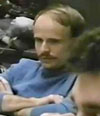
Young engineer on the team watches a flight replay in the NOVA film "The Light Stuff"
|

6. Historic documentary on MIT human powered flight posted
On April 23, 1988 AeroAstro's Daedalus flew 71.5 miles between the Greek islands of Crete and Santorini capturing the FAI world records for human-powered aircraft flight distance and duration; records that remain unbroken nearly 24 years later. That same year, the NOVA television program ran an episode titled "The Light Stuff," examining the story of Daedalus and the history of human-powered flight. Unavailable for some time, this fascinating documentary is now posted on YouTube in three installments. It's unknown if the poster obtained rights to the video, so it's possible online longevity may be brief. (BTW, you may see some familiar faces.)
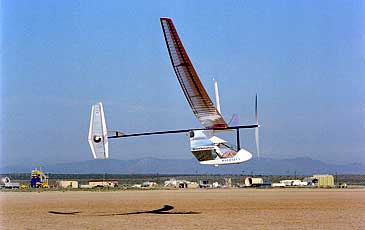
Daedalus
|
|

7. Space Center internship program hosts AA students
Massachusetts Space co-director Raji Patel sends us the following:
The January Internship Program ended late that month at Kennedy Space Center, and AeroAstro students did very well. The MIT January Internship Program was started 2004 at the suggestion of then Deputy Administrator Fred Gregory during a visit to MIT. It is conducted by Raji Patel and Jeff Hoffman, and funded through the Massachusetts Space Grant Consortium. The program gives an opportunity to eight AeroAstro students to spend two to three weeks at the Kennedy Space Center during IAP. KSC engineers and managers offer the students tours, briefings and demonstrations as an overview of the KSC operations and a look at aerospace design versus operability. The program requires the students make presentations to the KSC senior management.
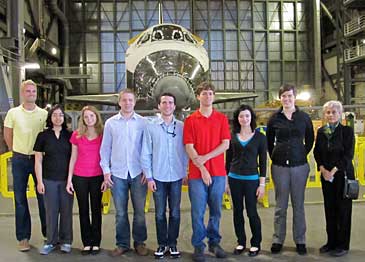
AeroAstro's January Internship group at Kennedy Space Center: (from left) Chris Trigg, Henna Jethani, Lindsay Sanneman, Dan Rankin, Zachary Casas, Chris Rossi, Anne Marinan, Libby Jones, and Raji Patel. |
 
|

Follow AeroAstro
Don't wait for your enews and emails — keep up with AeroAstro news as it happens — follow the department on Twitter and Facebook. |
|
If you know of events, honors, activities, or other information you'd like to see in the next issue of AeroAstro enews, please send to wlitant@mit.edu — we'd be pleased to include your submissions. |
|








